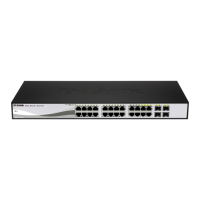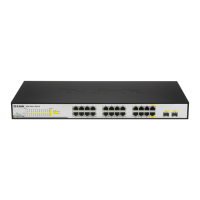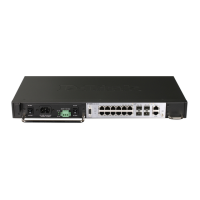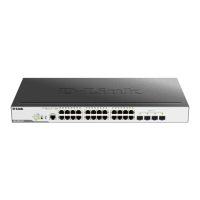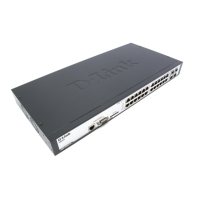Configuration D-Link Web Smart Switch User Manual
6
6
5
5
QoS > 802.1p/DSCP/ToS
QoS is an implementation of the IEEE 802.1p standard that allows network administrators to reserve
bandwidth for important functions that require a larger bandwidth or that might have a higher priority, such as
VoIP (voice-over Internet Protocol), web browsing applications, file server applications or video conferencing.
Thus with larger bandwidth, less critical traffic is limited, and therefore excessive bandwidth can be saved.
The following figure displays the status of Quality of Service priority levels of each port, higher priority means
the traffic from this port will be first handled by the switch. For packets that are untagged, the switch will
assign the priority depending on your configuration.
Figure 4.75 – QoS > 802.1p/DSCP/ToS
Select QoS Mode: Specifies the QoS mode to be 802.1p, DSCP or ToS.
Queuing Mechanism:
Strict Priority - Denoting a Strict scheduling will set the highest queue to be emptied first while the
other queues will follow the weighted round-robin scheduling scheme
WRR - Use the weighted round-robin (WRR) algorithm to handle packets in an even distribution in
priority classes of service.
Click Apply for the settings to take effect.
When 802.1p is selected in Select QoS Mode, the following selections appear.
From Port / To Port: A consecutive group of ports may be configured starting with the selected port.
Priority: Defines the priority assigned to the port. The priorities are Highest, High, Medium and Low.
When DSCP is selected in Select QoS Mode, the following selections appear.
From DSCP value / To DSCP value: Select a consecutive DSCP value.
Priority: Defines the priority assigned to the port. The priorities are Highest, High, Medium and Low.

